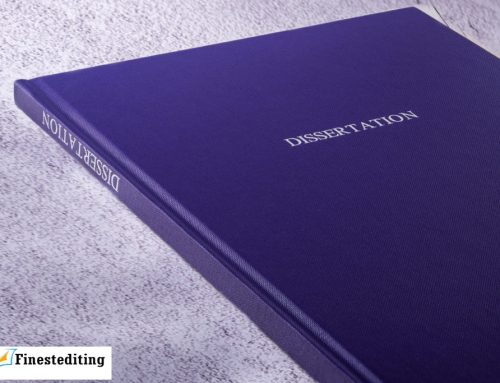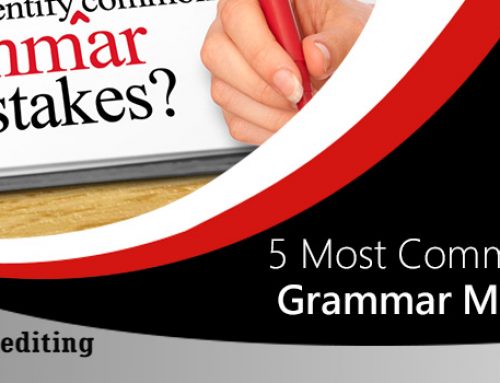Many people are under the impression that there is only one type of editing that works for all types of documents but they couldn’t be more wrong. There are five different editing types that are followed by editors. Each type is different and more specific than the other. People who demand editing services from different websites are often asked what sort of editing they would prefer. These people have no idea about the different types of editing and are unable to choose the best one for them. Here we are going to explain all five types of editing and what type of documents you can use each of them for.
Developmental Editing
This type of editing happens alongside the writing process. For example a writer has listed all the ideas for a book and is in dire need of someone to piece it all together then you can take help from a developmental editor. A developmental editor views your document holistically. They focus on how you have come up with a story line if it is a book and how you have carried it out. Is it in chronological order, or if you have used other writing styles such as flash back, then is the transition from one time period to other smooth? Similarly if it is an academic document they will focus on whether you have made the arguments properly or whether you have provided evidences to support your arguments. They will make sure no key information is left to be discussed and the whole text flows smoothly. After looking at the bigger picture, developmental editors focus on other smaller mistakes such as improper grammar or spelling mistakes. Developmental editors are not writers hence will not write the missing parts for you, they may suggest what you should write and in what way but you would have to do the writing on your own. This type of editing does not judge the content based on specific segments but how those segments work together to form a cohesive piece of writing. Developmental editing is best suited for people writing a book or a detailed dissertation as they are complicated and an editor’s support during the writing progress may be very helpful.
Evaluation Editing
Evaluation editing is the editing of the structure mostly. It focuses on the flow of your writing along with how you have structured it and if it is of the best quality. They will also focus on things such as vagueness and incomplete arguments. Evaluation editing goes by its name; it only evaluates the text but does not change it. After an evaluation editor is done with your text they will write a summary on it. That summary will talk about the weaknesses in your text such as if there is any missing segment or jumbled ideas. These weaknesses will be highlighted and they might even give suggestion as to what you should do next. Evaluation editing helps you identify the flaws and what type of editing you should use to fix your flaws such as it is possible that you have good writing skills but your content is not organized properly so they will suggest you to get developmental editing. Many people do argue that developmental editing and evaluation editing are similar in many ways but the biggest difference observed is that you need a completed document to get evaluation editing.
Substantive editing
Substantive editing is also called content editing. This type of editing works on a deeper level. Unlike developmental or evaluation, it focuses on individualistic aspects. Substantive editors read your entire content paragraph by paragraph. They focus on how these paragraphs are linked and if they make any sense. The see whether an idea has been developed and discussed as it should have been. In addition to this they also focus on highlighting all the parts that seem incomplete or are sharp. Substantive editors make it their duty to rule out all sharp turns and make the writing flow smoothly. The transition from one paragraph to other and from one idea to the other is given premium attention in this type of editing. The editor adds different transition words that will help your document shift from one paragraph to the other. The tone and voice of your writing will also be judged whether it is appropriate for the targeted audience or not. Content editors have the authority to shuffle between paragraphs and decide on the best place for each. However they cannot make big changes. This type of editing is more detailed than the developmental and evaluation editing.
Line Editing
This is the most detailed type of editing. Just as the name a line editor edits your document line by line. A line editor will jump right in and get their hands dirty. They will evaluate each and every line to see if it is perfect and fits in the passage. They focus on every word that you have written and check if the word choice is appropriate and it means exactly what you intended it to mean. They will also see if a sentence is vague or sounds awkward, they will change and rephrase all such sentences. Moreover, line editors make sure your content is free from redundancy and repetitive words. They also make sure that your script is not plagued by long non-ending sentences. They will break long sentences and arrange them into two smaller ones. Line editors are specially trained to eliminate wordiness and useless jargon from our content. This type of editing is better for academic assignments. Line editing is the direct opposite of developmental editing. Developmental editing is called macro editing as it focuses on the bigger picture and line editing is called micro editing as it focuses on words and sentences more.
Copy Editing
Copy editing takes place when all the work is completed and finalized. A copy editor reads your work and looks for linguistic errors such as grammatical discrepancies, spelling mistakes and other typographical errors. This is one of the most important types of editing as a work riddled with syntax errors or spelling blunders has a very negative impact on the audience. The mistakes that copy editors highlight are often overlooked even by native speakers. They are tiny and unidentifiable. However, if such mistakes pass through, they can create havoc. Not only this, copy editors also check if the work done is according to the guidelines provided for example , a line editor will check a dissertation and see if the citations are according to the citation style decided.
Here are all the five different types of editing services that offered by editing and Online Proofreading Services. You need to carefully understand what each one does and then observe your content and see which type of editing your content requires the most. Editing is a very important step and it makes the content shine with tweaks here and there. It is pleaded that do not take the editing of your document lightly, hire a professional editor. The specific skills of each editor can improve your content exponentially. Good luck on picking out the most suitable editing service.








Leave A Comment